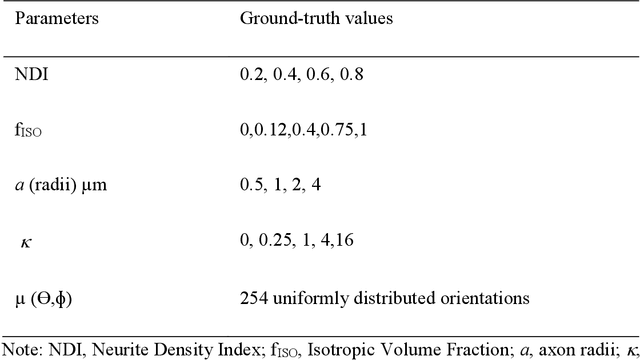Md Nasir Uddin
ArteryX: Advancing Brain Artery Feature Extraction with Vessel-Fused Networks and a Robust Validation Framework
Jul 10, 2025Abstract:Cerebrovascular pathology significantly contributes to cognitive decline and neurological disorders, underscoring the need for advanced tools to assess vascular integrity. Three-dimensional Time-of-Flight Magnetic Resonance Angiography (3D TOF MRA) is widely used to visualize cerebral vasculature, however, clinical evaluations generally focus on major arterial abnormalities, overlooking quantitative metrics critical for understanding subtle vascular changes. Existing methods for extracting structural, geometrical and morphological arterial features from MRA - whether manual or automated - face challenges including user-dependent variability, steep learning curves, and lack of standardized quantitative validations. We propose a novel semi-supervised artery evaluation framework, named ArteryX, a MATLAB-based toolbox that quantifies vascular features with high accuracy and efficiency, achieving processing times ~10-15 minutes per subject at 0.5 mm resolution with minimal user intervention. ArteryX employs a vessel-fused network based landmarking approach to reliably track and manage tracings, effectively addressing the issue of dangling/disconnected vessels. Validation on human subjects with cerebral small vessel disease demonstrated its improved sensitivity to subtle vascular changes and better performance than an existing semi-automated method. Importantly, the ArteryX toolbox enables quantitative feature validation by integrating an in-vivo like artery simulation framework utilizing vessel-fused graph nodes and predefined ground-truth features for specific artery types. Thus, the ArteryX framework holds promise for benchmarking feature extraction toolboxes and for seamless integration into clinical workflows, enabling early detection of cerebrovascular pathology and standardized comparisons across patient cohorts to advance understanding of vascular contributions to brain health.
Angular upsampling in diffusion MRI using contextual HemiHex sub-sampling in q-space
Nov 01, 2022Abstract:Artificial Intelligence (Deep Learning(DL)/ Machine Learning(ML)) techniques are widely being used to address and overcome all kinds of ill-posed problems in medical imaging which was or in fact is seemingly impossible. Reducing gradient directions but harnessing high angular resolution(HAR) diffusion data in MR that retains clinical features is an important and challenging problem in the field. While the DL/ML approaches are promising, it is important to incorporate relevant context for the data to ensure that maximum prior information is provided for the AI model to infer the posterior. In this paper, we introduce HemiHex (HH) subsampling to suggestively address training data sampling on q-space geometry, followed by a nearest neighbor regression training on the HH-samples to finally upsample the dMRI data. Earlier studies has tried to use regression for up-sampling dMRI data but yields performance issues as it fails to provide structured geometrical measures for inference. Our proposed approach is a geometrically optimized regression technique which infers the unknown q-space thus addressing the limitations in the earlier studies.
DLpN: Single-Shell NODDI Using Deep Learner Estimated Isotropic Volume Fraction
Feb 02, 2021
Abstract:Neurite orientation dispersion and density imaging (NODDI) enables assessment of intracellular, extracellular and free water signals from multi-shell diffusion MRI data. It is an insightful approach to characterize the brain tissue microstructure. Single-shell reconstruction for NODDI parameters has been discouraged in previous literature based on failure when fitting especially for the neurite density index (NDI). Here, we investigated the possibility to create robust NODDI parameter maps with single-shell data, using isotropic volume fraction (f_{ISO}) as prior. We made the prior estimation independent of NODDI model constraint using a dictionary based deep learning approach. First, we proposed a stochastic sparse dictionary-based network, DictNet in predicting f_{ISO} . In single-shell cases, fractional anisotropy (FA) and T2 signal without diffusion weighting ( S_0 ) were incorporated in the dictionary for f_{ISO} estimation. Then, NODDI framework was used in a prior setting to estimate the NDI and orientation dispersion index (ODI). Using both synthetic data simulation and human data collected on a 3T scanner, we compared the performance of our dictionary based deep learning prior NODDI (DLpN) with original NODDI method for both single-shell and multi-shell data. Our results suggest that DLpN derived NDI and ODI parameters for single-shell protocols are comparable with original multi-shell NODDI, and protocol with b=2000 s/mm 2 performs the best (error ~2% in white matter and ~4% in grey matter). This may allow NODDI evaluation of retrospective studies on single-shell data by additional scanning of two subjects for DictNet f_{ISO} training.
 Add to Chrome
Add to Chrome Add to Firefox
Add to Firefox Add to Edge
Add to Edge